Related Research Articles

Captain Robert Falcon Scott was a British Royal Navy officer and explorer who led two expeditions to the Antarctic regions: the Discovery expedition of 1901–04 and the Terra Nova expedition of 1910–13.

Sir Ernest Henry Shackleton was an Anglo-Irish Antarctic explorer who led three British expeditions to the Antarctic. He was one of the principal figures of the period known as the Heroic Age of Antarctic Exploration.

Circumnavigation is the complete navigation around an entire island, continent, or astronomical body. This article focuses on the circumnavigation of Earth.
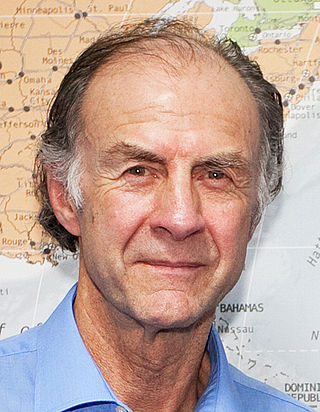
Sir Ranulph Twisleton-Wykeham-Fiennes, 3rd Baronet, commonly known as Sir Ranulph Fiennes and sometimes as Ran Fiennes, is a British explorer, writer and poet, who holds several endurance records.
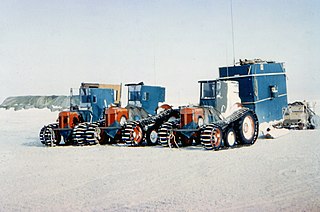
The Commonwealth Trans-Antarctic Expedition (CTAE) of 1955–1958 was a Commonwealth-sponsored expedition that successfully completed the first overland crossing of Antarctica, via the South Pole. It was the first expedition to reach the South Pole overland for 46 years, preceded only by Amundsen's expedition and Scott's expedition in 1911 and 1912.
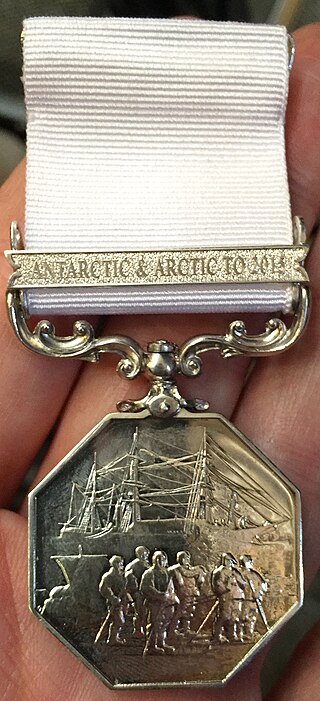
The Polar Medal is a medal awarded by the Sovereign of the United Kingdom to individuals who have outstanding achievements in the field of polar research, and particularly for those who have worked over extended periods in harsh climates. It was instituted in 1857 as the Arctic Medal, and renamed the Polar Medal in 1904.
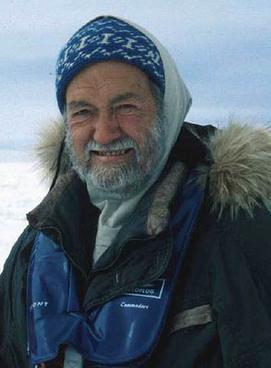
Sir Walter William Herbert was a British polar explorer, writer and artist. In 1969 he became the first man fully recognized for walking to the North Pole, on the 60th anniversary of Robert Peary's disputed expedition. He was described by Sir Ranulph Fiennes as "the greatest polar explorer of our time".
Prof Michael Adrian Stroud, OBE, FRCP is an expert on human health under extreme conditions. He became widely known when he partnered with Ranulph Fiennes on polar expeditions.
Paul Landry M.B. is a French-Canadian polar explorer, author, and adventurer who is the only paid man to ever reach three Geographical poles in a single year.

The Ruger Redhawk is a DA/SA, large-frame revolver introduced in 1979 by Sturm, Ruger & Company.

The Heroic Age of Antarctic Exploration was an era in the exploration of the continent of Antarctica which began at the end of the 19th century, and ended after the First World War; the Shackleton–Rowett Expedition of 1921–1922 is often cited by historians as the dividing line between the "Heroic" and "Mechanical" ages.
The Transglobe Expedition (1979–1982) was the first expedition to make a longitudinal (north–south) circumnavigation of the Earth using only surface transport. British adventurer Sir Ranulph Fiennes led a team, including Oliver Shepard and Charles R. Burton, that attempted to follow the Greenwich meridian over both land and water. They began in Greenwich in the United Kingdom in September 1979 and travelled south, arriving at the South Pole on 15 December 1980. Over the next 14 months, they travelled north, reaching the North Pole on 11 April 1982. Travelling south once more, they arrived again in Greenwich on 29 August 1982. It required traversing both of the poles and the use of boats in some places. Oliver Shepard took part in the Antarctic leg of the expedition. Ginny Fiennes handled all communications between the land team and their support, and ran the polar bases.
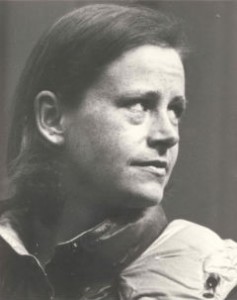
Virginia Frances, Lady Twisleton-Wykeham-Fiennes, known as Ginny Fiennes, was an English explorer. She was the first woman to be awarded the Polar Medal, and the first woman to be voted in to join the Antarctic Club in recognition of her research work for the British Antarctic Survey and University of Sheffield into very low frequency radio propagation. Her husband was adventurer Ranulph Fiennes.

Farthest South refers to the most southerlypoooooppp latitudes reached by explorers before the first successful expedition to the South Pole in 1911.

The Southern CrossExpedition, otherwise known as the British Antarctic Expedition, 1898–1900, was the first British venture of the Heroic Age of Antarctic Exploration, and the forerunner of the more celebrated journeys of Robert Falcon Scott and Ernest Shackleton. The brainchild of the Anglo-Norwegian explorer Carsten Borchgrevink, it was the first expedition to over-winter on the Antarctic mainland, the first to visit the Great Ice Barrier—later known as the Ross Ice Shelf—since Sir James Clark Ross's groundbreaking expedition of 1839 to 1843, and the first to effect a landing on the Barrier's surface. It also pioneered the use of dogs and sledges in Antarctic travel.

Charles Robert Burton known as Charlie Burton was an English explorer, best known for his part in the Transglobe Expedition, the first expedition to circumnavigate the globe from pole to pole. Serving as cook, radio operator, and mechanic, he was the only member of the team to accompany the expedition's leader, Ranulph Fiennes, on the entire route.
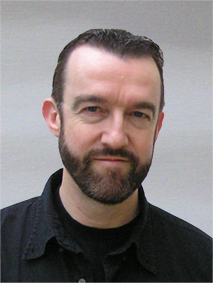
Nigel Cox is an Irish figurative artist.
The Coldest Journey was a 2013 Commonwealth-supported expedition to Antarctica with the aim of becoming the first team ever to cross the Antarctic land mass during the polar winter. The endeavour aimed to raise more than $10 million for Seeing is Believing, a global charitable initiative which aims to eradicate avoidable blindness in developing countries. The team used cloud-based web technologies to connect with schools across the world as part of an educational programme designed to inspire a new generation towards high achievement. The project also performed scientific research and collected climate and weather data from Antarctica during the expedition to further the understanding of the effects of climate change on the polar regions.
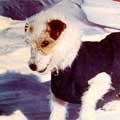
Bothie, also known as Bothie the Polar Dog, was a long-haired Jack Russell Terrier who was the only dog to travel to both the South and North Poles. Bothie was owned by Ranulph Fiennes and Ginny Fiennes and accompanied the team on the circumpolar Transglobe Expedition from 1979 to 1982.
References
- ↑ Dimery, Rob (18 August 2015). "1982: First Surface Circumnavigation via both Geographical Poles". Guinness World Records . Archived from the original on 18 October 2022. Retrieved 18 October 2022.
- ↑ Shepard, Oliver (1981). "Transglobe Expedition, 1979–82". Polar Record. 20 (129). Cambridge University Press: 572–575. Bibcode:1981PoRec..20..572S. doi:10.1017/S0032247400004034. S2CID 129179814. Archived from the original on 25 November 2022. Retrieved 25 November 2022.
- ↑ Preston, Alex (24 August 2019). "Pole to Pole: the story behind Sir Ranulph Fiennes' pioneering circumpolar expedition - told 40 years on". Daily Telegraph . Archived from the original on 16 October 2022. Retrieved 16 October 2022.
- ↑ "Biographies". Transglobe Expedition . Archived from the original on 2 October 2022. Retrieved 4 November 2022.
- ↑ The Economist (2019). "Literary trek eased the polar depths". The Australian . Retrieved 25 November 2022.
- ↑ "Centurions welcome expedition legend". The Volunteer. No. 90. North West Reserve Forces & Cadets Association. 2012. p. 8.